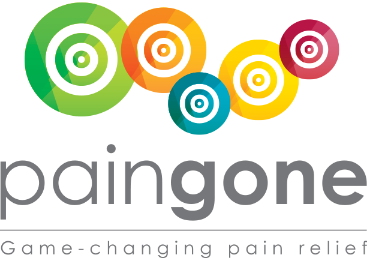
May 20, 2021
Paingone
Back Pain in Women Linked to Higher Mortality Risk
Pain has a domino effect on every aspect of our lives. Back pain in particular often leads to lifestyle changes that aren’t healthy. Boston Medical Center recently released details of a study that indicated women had a higher mortality risk if they suffered severe frequent or chronic back pain. The recurring pain typically led to reduced activity, limited mobility and weight gain, all factors contributing to complications of other health problems such as diabetes and heart disease. Instability and an increased risk of falls in older women also contributed to the increased risk of death.
Researchers hope this will lead to more focus on alternative methods of pain relief for those suffering from back pain. Quality of life has long been a concern; the addition of mortality risk to the equation makes the issue of addressing and overcoming pain more urgent than ever.
Eric Roseen, DC, MSc, Director of the Program for Integrative Medicine and Health Disparities at Boston Medical Center, said, “I hope this study will lead to a better understanding of the long-term impacts of activity-limiting back pain on overall health and research to improve back pain treatment over the course of patients’ lives. Proper management of back pain is important, especially as the opioid epidemic has been exacerbated and the COVID-19 pandemic has impacted people seeking medical care, stress-levels and the environments in which many Americans are working right now.”
Decrease in Healthcare Professionals Looms on the Horizon
Chronic and recurring pain can be treated by physicians, chiropractors, physical therapists, and pain management specialists. In recent years, all of these occupations have seen a decline in numbers that may become a concern for those who need frequent treatment for ongoing pain or acute flare-ups. In recent weeks, surveys and reports have confirmed that the trend toward fewer pain treatment professionals and doctors in general continues.
Shortage of Chiropractors in the United States Grows
Chiropractic medicine has become increasingly popular in the U.S. in the last few decades, particularly for treating chronic and episodic pain. Nearly all health insurance providers now cover chiropractic care, and it is considered part of the medical mainstream. It is surprising, then, to learn that the number of chiropractors is declining and will continue to do so unless the number of new chiropractors entering the workforce increases.
According to the most recent Chiropractic Economics Salary & Expense Survey by Chiropractic Economics, the age of the average chiropractor has been on the rise in the past few years. The average age for a chiropractor is now over 50 years of age, with many looking toward retirement. With the number of active seniors growing, the need for pain management and treatment of musculature problems will increase. Also decreasing slightly is the number of chiropractors practicing in rural and suburban areas, where they are urgently needed.
US News and World Reports Predicts Increasing Shortfall of Doctors
A recent article in US News and World Report claims that a continuing reduction in the number of doctors in the United States will have a profound impact on healthcare in the United States. According to the article, the Association of American Medical Colleges predicts a shortage of nearly 140,000 doctors by the time 2033 rolls around. An increasingly older population will suffer a variety of consequences due to the lack of physicians, including more difficulty getting an appointment and delays in care.
How Telehealth is Changing the Face of Pain Treatment
In a recent article at Med Page Today, the benefits and drawbacks of using telehealth during the pandemic were addressed, with a focus on how it impacted pain treatment. Some of the downsides of telemedicine include lack of access, particularly in poor and rural areas, or poor connection quality. However, the overall consensus was that for anyone who is isolated due to the pandemic, location, or lack of access to transportation, telehealth provided efficient, effective access to doctors and pain treatment specialists.
Evaluating level of pain and location is more difficult when done during a videoconference or Zoom meeting because physicians can’t touch the area in question or do a physical exam. Instead, they must rely on reading body language, the accuracy of patient descriptions, and pain assessment scales to determine the level of pain and its possible cause.
Telehealth’s advantages for continuing treatment were noted. Triaging and following up with patients after they are initially seen in an office setting is one way telehealth can reduce the cost of care while minimizing the need for patients already in pain to have to travel to a physician’s office for follow-up appointments.
App to Track Pain Aids in Pain Management
The Journal of Medical Internet Research recently completed a study focusing on the effectiveness of a mobile phone app for tracking and managing pain. Patients receiving treatment for chronic pain were asked to chart their pain occurrences and level of discomfort either with a phone app or using written questionnaires. The app, called Manage My Pain, asks questions and gives users short summaries of their progress. Charts and graphs offer detailed analytics that doctors can use to assess patient progress and pain level, including how effectively a treatment is working.

The results indicated that patients using the Manage My Pain app suffered less anxiety than those who used written questionnaires. App users were less prone to catastrophizing their pain levels and were less depressed due to chronic moderate to severe pain than those who didn’t use the app. Using the app daily empowers pain sufferers, allowing them to acknowledge their pain levels and determine which treatments are working best for them more accurately. Self-management of pain also increases.
Is Paingone helping your patients and your practice?
Tell us your success story.
A robust retail strategy is essential to growing your practice.
You only have so many hours a week available for appointments. The fastest way to increase your bottom line is to incorporate profitable products that generate repeat business and build your reputation as a medical professional. That’s where Paingone comes in.
Contact us below to learn more about our products, wholesale pricing and how Paingone can benefit your practice.

